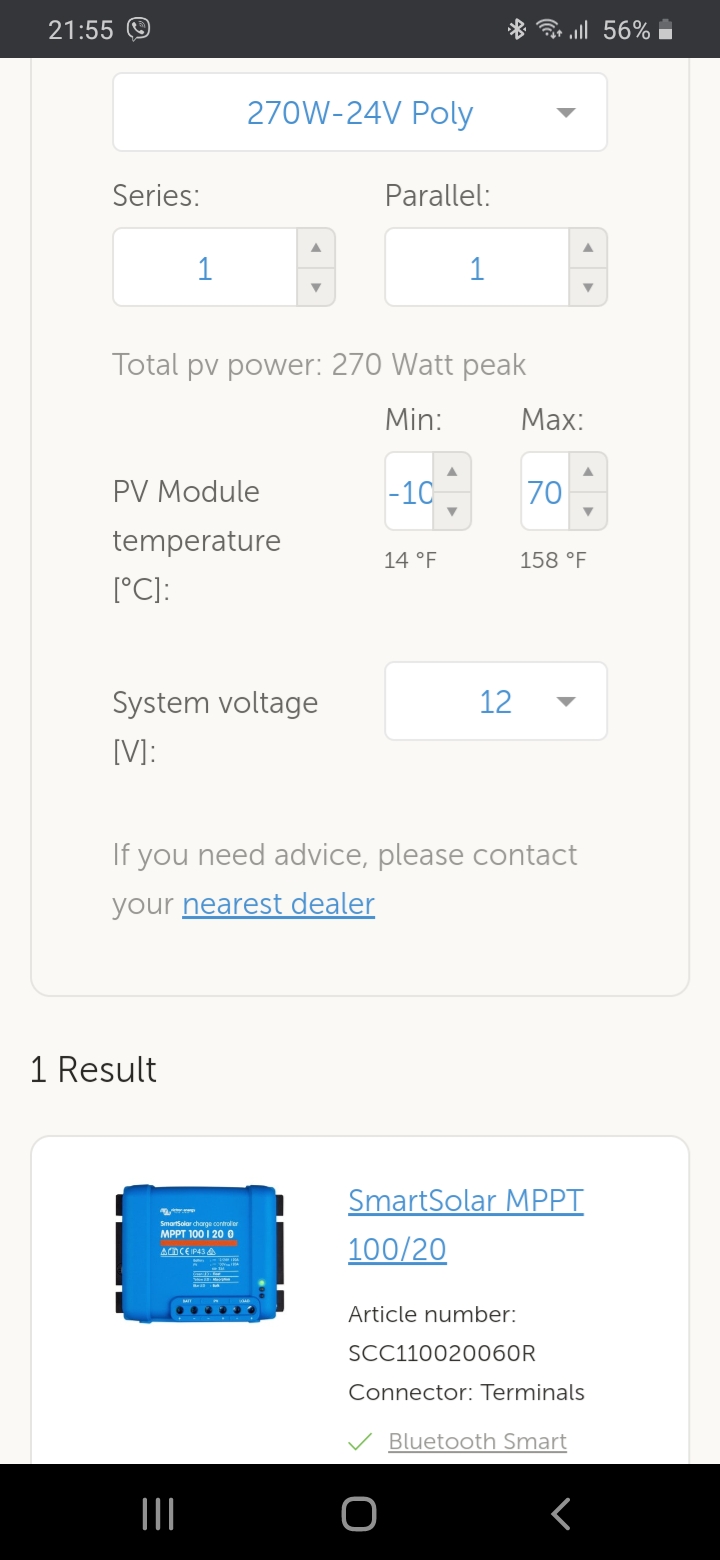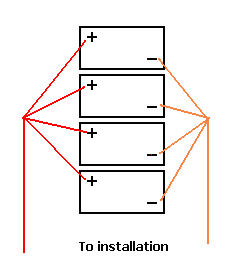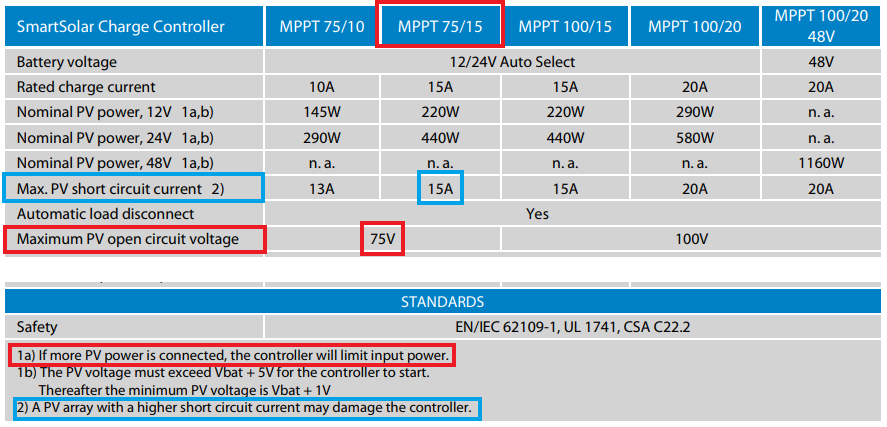hi there, i am new to this forum and also a PV beginner, so my questions might sound silly, apologies.
two things:
1. i have a 75/15 mppt installed combined with 2 50w westech panels
panel specs:
| Maximum power (W) |
50Wp
|
| Voltage at maximum power (V) |
18,6 V
|
| Current at maximum power (A) |
2,69 A
|
| Open-circuit voltage (V) |
22,7 V
|
| Short-circuit current (A) |
2,88 A
|
| Length x Width x Height Frame/Socket |
668 x 545 x 35 mm
|
| Maximum voltage |
1000 V
|
| Weight |
4,3 kg
|
how many more panels can i connect in parallel? as far as i can understand, i need to add the short circuit current figures and make sure that total amps don't exceed 15 amps.
2. i want to deliver ~15 amps 30-35 meters away (100-114 feet) from the battery bank. a dc cable calculator i found online, suggests that an AWG 00 (~9mm diameter) cable should be used. has anyone done anything similar?any suggestions?
thank you all in advance for your answers




